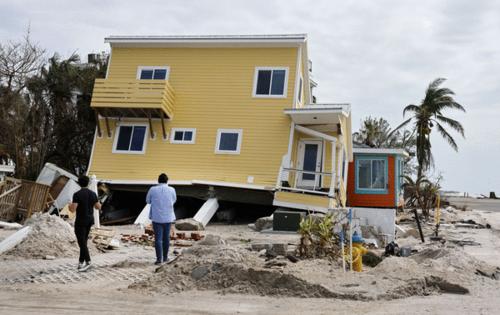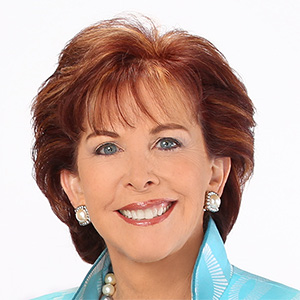Falling Citizens Insurance rates can't stop premiums from rising
Published in Business News
Citizens Insurance customers who renew their policies after June 1 shouldn’t expect their premiums to fall despite what the governor said last week.
During a news conference to highlight positive developments that have occurred in the insurance market since the Legislature enacted tort reforms in 2022 and 2023, Gov. Ron DeSantis announced that rates would decline by 5.6% on average for about 20% of Citizens’ customers across Florida.
In Broward County, 52% of homeowners would see average decreases of 4.5% while 73% of Miami-Dade customers would see rates fall by an average of 6.3%, DeSantis said.
But according to a chart released by the state-owned “insurer of last resort,” Miami-Dade is the only county where average premiums will go down — with average savings of $123 — after those lower renewal rates take effect on June 1.
Citizens produced the chart to show how average premiums in each county would be affected if the rate changes took place at one time, Citizens spokesman Michael Peltier said. The calculations do not consider effects of individual coverage changes or anticipate how the total insured value of properties might change when policies come up for renewal, he said.
If the rate increases took effect immediately, Broward County residents would pay an average of $54 more than they’re currently paying while Palm Beach County customers would pay $390 more.
Average increases elsewhere range from $15 for 86 Citizens customers who live in Suwannee County to $640 for the 140 Citizens customers in Franklin County.
Mark Friedlander, director of corporate communications for the industry funded Insurance Information Institute, said that premiums rise if rate decreases are offset by increases of the replacement value of homes. Replacement costs, he said, have risen by 55% since 2019 "due to supply chain disruption, escalating costs of construction materials and labor shortages," and are expected to continue rising by 3.3% in 2025.
Still, the estimated Citizens increases would have been larger if insurance regulators had approved the 13.5% increase requested by the company for its single-family homeowner policies last June.
Instead of paying an average $6,112 upon renewal, Broward homeowners will pay $5,421. Palm Beach County homeowners will pay $5,223 instead of $5,561.
Citizens customers in Florida's other 64 other counties will also be hit with a smaller increase than Citizens originally proposed.
Rather than an average of $2,909, Orange County homeowners will pay $2,888. Osceola County homeowners will pay an average $2,621 rather than $2,669.
Seminole County homeowners will pay $2,725 rather than $2,734. Lake County homeowners will pay $2,248 rather than $2,279. And Volusia County residents will pay $2,509 rather than $2,604.
Officials of the Florida Office of Insurance Regulation took seven months before deciding to chop the 13.5% statewide average increase Citizens sought for its single-family homeowner policies down to 7.0%.
Citizens had decided to request a rate hike close to the 14% maximum allowable by state law because, officials said, state law also requires Citizens to provide rates that are "non-competitive" with the private insurance market. The company had intended to phase in much-higher increases in the future until, for example, average rates were 74.1% higher in Broward County, 82.6% higher in Miami-Dade County and 78.1% higher in Palm Beach County.
State insurance regulators decided to reach a balance between the law that called for Citizens to become "non-competitive" with another law requiring their rates to be "actuarily sound" — meaning sufficient to pay expected losses.
Because rates in Broward, Palm Beach and Miami-Dade counties rose much faster than in the rest of the state in the years before the reforms reduced litigation, some lawmakers wondered why the three counties weren't due for a break this year.
Citizens' own data showed that to achieve actuarial soundness in the three counties, much smaller increases could have been approved for Broward and Palm Beach while Miami-Dade would have seen a 4% decrease.
Policyholders might be confused about why premiums can increase at the same time that rates decline.
"Rates and premiums are different," Peltier said. "Basically, premiums — the amount policyholders pay — are a combination of the rate and the replacement cost of the property. A policyholder who receives a rate decrease may in some cases still see a premium increase because the replacement cost of their home went up due to inflation in the cost of building materials and the construction labor market."
Friedlander further clarified that "rates are the cost of a unit of insurance, usually per $1,000 of coverage."
He added, "Rates are based on historical loss experience for similar risks" while "premiums are determined by numerous individual rating factors for each property and policyholder."
Common factors that determine premium costs include a home's replacement value, its structural age, its roof age and material, the location of the home, and its proximity to a fire station and hydrants. Premiums are also based on choices made by homeowners. These include whether the homeowner chooses to cover a swimming pool, detached garage or gazebo, and personal possessions.
Other choices include whether a homeowner chooses to insure based on actual replacement cost or depreciated value, and their deductible levels. Some factors that determine premiums are the homeowner's claim history and their credit-based insurance score, Friedlander said.
©2025 South Florida Sun Sentinel. Visit at sun-sentinel.com. Distributed by Tribune Content Agency, LLC.












Comments